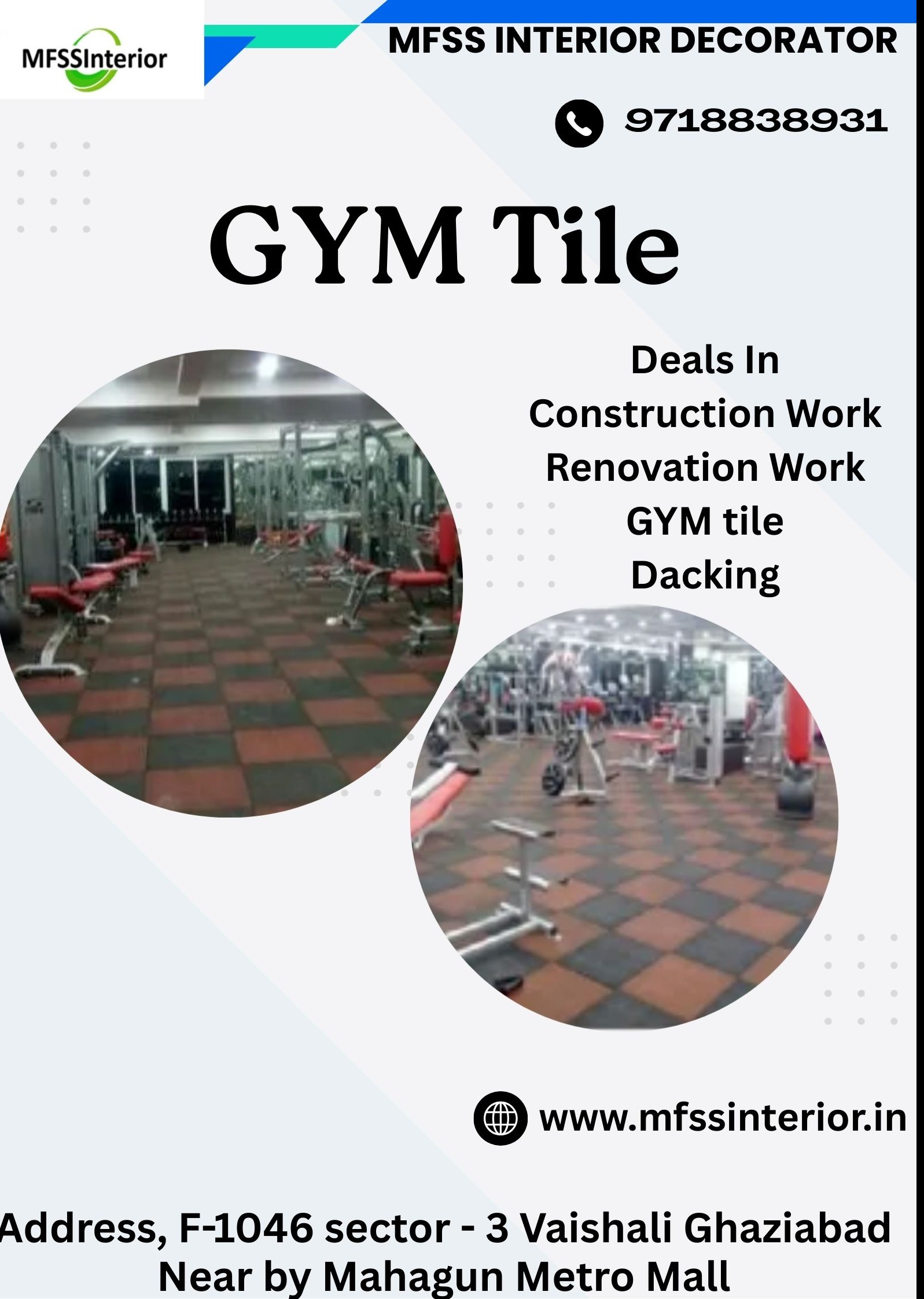
Gym Tile Work In Vasundhara Ghaziabad

You are asking about Gym Tile Work. Here’s a clear breakdown: 🏋️♂️ Types of Tiles/Flooring Used in Gyms Rubber Tiles (Most Common) Thickness: 10mm – 50mm (heavier areas need thicker tiles) Shock-absorbent → protects floor from heavy weights Non-slip, safe for workouts Easy to clean EPDM Rubber Flooring Soft, colorful granules mixed with rubber Good for aerobics, yoga zones, kids’ fitness areas Vinyl / PVC Sports Flooring Smooth finish Used for indoor games, cardio zones Easy maintenance Foam Tiles (EVA Mats) Used in yoga, pilates, martial arts areas Soft cushioning, lightweight Not suitable for heavy weights Interlocking Rubber Mats Easy DIY installation Can replace damaged pieces individually 🛠️ Work Process for Gym Tile Installation Surface Preparation Floor should be level, clean, and dry Remove dust, oil, old flooring Layout Planning Mark the area and plan tile arrangement Keep cut edges towards the wall Installation Interlocking tiles → lock together, no adhesive needed Rubber rolls → glued down with adhesive Vinyl/PVC → adhesive or loose lay Finishing Check alignment Trim excess edges Seal if required (vinyl floors sometimes need sealing) Cleaning & Maintenance Regular sweeping & mopping Avoid harsh chemicals Rubber tiles: mop with mild detergent 📏 Recommended Thickness Cardio/Yoga area → 10–12 mm Free weights area → 20–50 mm (heavier the weights, thicker the tile) CrossFit/Heavy Lifting → 30–50 mm rubber tiles
Subscribe for latest offers & updates
We hate spam too.


